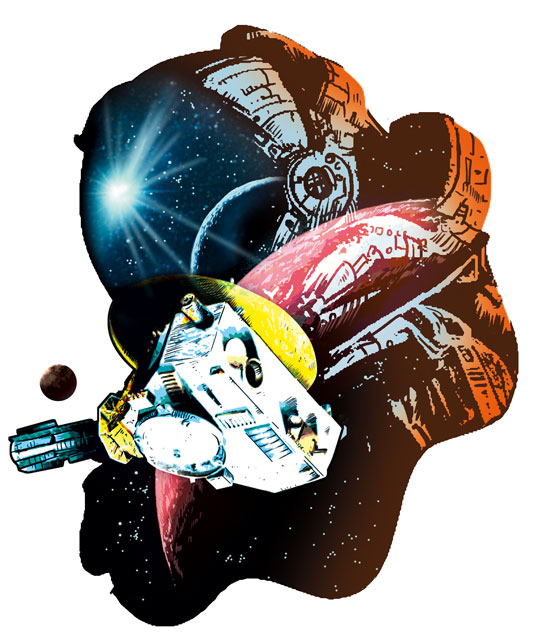Nasa’s New Horizons spacecraft, now exploring the vast region of our solar system beyond Neptune, known as the Kuiper belt, completed yet another trip full of superlatives: Recently, it celebrated its closest approach to Ultima Thule, the farthest object ever visited by a spacecraft. Ultima Thule is one billion miles past Pluto, more than four billion miles from Earth, and radio signals take more than six hours to travel from the spacecraft back to Nasa’s receivers. At this distance, the sun is just the brightest star in sight, and the local temperature is a balmy minus-390 degrees Fahrenheit.
New Horizons, for which I serve as a member of the science team, is a prime example of the essence of robotic exploration. Space robots might not capture the imagination of the public as much as, for example, a person setting foot on the moon or travelling to Mars would. But today, they are operating at the frontier of science. And so they deserve a moment for our gratitude.

We can design robots to survive long cruises and the extremes of radiation and temperature in space. And we can reprogramme and repurpose them as new exploration opportunities become available. Ultima Thule was not even discovered until eight years after New Horizons was launched in 2006. The entire planning for the Ultima Thule encounter did not even begin until after New Horizons sped past Pluto in 2015. The discovery of Ultima Thule allowed Nasa to take advantage of a healthy and operating spacecraft deep in the outer solar system. Since it took nine years to get to Pluto, this placed an extremely capable observatory deep into previously unexplored regions.
Robots can also carry instruments that hugely extend the reach and sensitivity of our senses. Robots can be built relatively cheaply and relatively quickly as opportunities for exploration present themselves. New Horizons was designed, built, tested and launched in a little less than four years. For spacecraft, this was very fast because it was driven by the need to take advantage of a celestial free ride, the chance to borrow some energy from an encounter with Jupiter that would accelerate New Horizons towards Pluto and cut five years off the trip.
Future explorers
Fundamentally, robots and robotic exploration are all about taking chances. Going into the unknown, doing it quickly and for modest investments, and discovering critical data in unexplored regions, is going to be risky. Robots do the risky exploration of new regions to pave the way for future explorers — either more capable robots or humans.
Human and robotic exploration are synergistic and mutually dependent. Part of the success of the Apollo missions to the moon was their smart use of pioneering robots. For example, Nasa’s Lunar Orbiters mapped the moon’s surface, Nasa’s Rangers got close-up views of the surface and helped perfect navigation skills, and Nasa’s Surveyors explored the surface and practised soft landings. We take the bigger chances with the robots so that we can explore safer and smarter with humans.
New Horizons continues its mission of exploration. Given the staggering distances, it will take almost two more years for all the data collected during the short fly-by of Ultima Thule to be broadcast back to Earth. During that time (before any next mission for it is approved), New Horizons will continue exploring the edge of the solar system by using its instruments to observe other Kuiper Belt belt objects too distant and too faint to be effectively observed from Earth.
And that’s just one of many robotic missions now exploring our solar system. The Insight lander that arrived on Mars last year is listening for “Marsquakes”; the OSIRIS-REx spacecraft is preparing to sample an asteroid; the Lunar Reconnaissance Orbiter is mapping our moon; and the Juno probe is orbiting Jupiter.
But this is what robots and robotic exploration are good for: Going to the extremes of the solar system, coping with the extreme environments and providing the new views of a solar system that continues to amaze, surprise and inspire.
— Washington Post
Daniel Britt is the Pegasus professor of astronomy and planetary sciences at the University of Central Florida. He has served on the science teams of several Nasa missions, including New Horizons.









